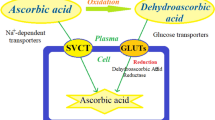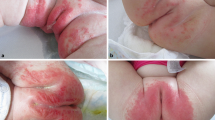Abstract
Background
Allergy march refers to progression of allergic diseases from infantile food allergy to the development of asthma and allergic rhinitis (AR). Evidence come mostly from studies in European countries. This study aimed to investigate allergy march in Chinese children with infantile food protein allergy (FPA) with a special focus on the effect of different formula interventions.
Methods
From 2008 to 2010, 153 infants diagnosed with FPA were recruited in five tertiary hospitals across China. They were randomly treated with amino-acid-based formula or soy-protein-based formula for a period of 3 months. Long-term follow-up was performed when they reached early school age, using questionnaires, physical examinations, and serum-specific immunoglobulin E.
Results
The overall follow-up rate was 73.20%. In patients who reached their early school years, the prevalence of physician-diagnosed AR and asthma were 43.75% and 23.21%, respectively. Only 40% of the subjects remained positive for food sensitizations upon follow-up. Twenty-six subjects receiving aeroallergen screening tests in infancy all proved negative, but upon follow-up, 65.57% were sensitized to aeroallergens (P=0.005). No significant difference between the effects of amino-acid-based formula and soy-protein-based formula on children’s allergy march was observed.
Conclusions
A high proportion (47.32%) of Chinese infants with early allergic symptoms developed respiratory allergies by their early school years. Most food-sensitized infants outgrew their condition several years later, but then aeroallergen sensitization often occurred. Amino-acid-based formula showed no advantages over soy protein-based formula with respect to arresting the allergy march.
Similar content being viewed by others
References
Sohi DK, Warner JO. Understanding allergy. J Paediatr Child Health 2008;18:301–308.
Horwood LJ, Fergusson DM, Shannon FT. Social and familial factors in the development of early childhood asthma. Pediatrics 1985;75:859–868.
Bergmann RL, Wahn U, Bergmann KE. The allergy march: from food to pollen. Environ Toxicol Pharmacol 1997;4:79–83.
Ekbäck M, Tedner M, Devenney I, Oldaeus G, Norrman G, Stromberg L, et al. Severe eczema in infancy can predict asthma development. A prospective study to the age of 10 years. PLoS One 2014;9:e99609.
Ma L, Shen KL, **a XL, **e JJ, Zhou W, Li ZL, et al. A clinical multi-center study of the efficacy and safety of an amino acidbased formula in the treatment of infants with food protein, Chin J Prac Pediatr 2012;27:766–769. [In Chinese]
Williams HC, Burney PG, Hay RJ, Archer CB, Shipley MJ, Hunter JJ, et al. The U.K. Working Party’s Diagnostic Criteria for Atopic Dermatitis. I. Derivation of a minimum set of discriminators for atopic dermatitis. Br J Dermatol 1994;131:383–396.
Subspecialty Group of Rhinology and Pediatrics, Society of Otorhinolaryngology Head and Neck Surgery, Chinese Medical Association. Experts consensus on the diagnosis and management of children’s allergic rhinitis (Chongqing, 2010). Chin J Pediatr 2011;49:116–117. [In Chinese]
Asher MI, Keil U, Anderson HR, Beasley R, Crane J, Martinez F, et al. International Study of Asthma and Allergies in Childhood (ISAAC): rationale and methods. Eur Respir J 1995;8:483–491.
Severity scoring of atopic dermatitis: the SCORAD index. Consensus Report of the European Task Force on Atopic Dermatitis. Dermatology 1993;186:23–31.
Barnetson RS, Rogers M. Childhood atopic eczema. BMJ 2002;324:1376–1379.
National Cooperative Group on Childhood Asthma, Institute of Environmental Health and Related Product Safety, Chinese Center for Disease Control and Prevention. Third nationwide survey of childhood asthma in urban areas of China. Chin J Pediatr 2013;51:729–735. [In Chinese]
Gu H, You LP, Liu YS, Yan Y, Chen K. Survey on the prevalence of childhood atopic dermatitis in ten cities of China. Chin J Dermatol 2004;37:29–31. [In Chinese]
Illi S, von Mutius E, Lau S, Nickel R, Grüber C, Niggemann B, et al. The natural course of atopic dermatitis from birth to age 7 years and the association with asthma. J Allergy Clin Immunol 2004;113:925–931.
Melioli G, Marcomini L, Agazzi A, Bazurro G, Tosca M, Rossi GA, et al. The IgE repertoire in children and adolescents resolved at component level: a cross-sectional study. Pediatr Allergy Immunol 2012;23:433–440.
Nissen SP, Kjaer HF, Høst A, Nielsen J, Halken S. The natural course of sensitization and allergic diseases from childhood to adulthood. Pediatr Allergy Immunol 2013;24:549–555.
von Kobyletzki LB, Bornehag CG, Hasselgren M, Larsson M, Lindstrom CB, Svensson A. Eczema in early childhood is strongly associated with the development of asthma and rhinitis in a prospective cohort. BMC Dermatol 2012;12:11.
Carlsten C, Dimich-Ward H, Ferguson A, Watson W, Rousseau R, Dybuncio A, et al. Atopic dermatitis in a high-risk cohort: natural history, associated allergic outcomes, and risk factors. Ann Allergy Asthma Immunol 2013;110:24–28.
Guilbert TW, Morgan WJ, Zeiger RS, Bacharier LB, Boehmer SJ, Krawiec M, et al. Atopic characteristics of children with recurrent wheezing at high risk for the development of childhood asthma. J Allergy Clin Immunol 2004;114:1282–1287.
Lee E, Lee SH, Kwon JW, Kim YH, Cho HJ, Yang SI, et al. Atopic dermatitis phenotype with early onset and high serum IL-13 is linked to the new development of bronchial hyperresponsiveness in school children. Allergy 2016;71:692–700.
Kemp AS, Hill DJ, Allen KJ, Anderson K, Davidson GP, Day AS, et al. Guidelines for the use of infant formulas to treat cows milk protein allergy: an Australian consensus panel opinion. Med J Aust 2008;188:109–112.
von Berg A, Filipiak-Pittroff B, Kramer U, Hoffmann B, Link E, Beckmann C, et al. Allergies in high-risk schoolchildren after early intervention with cow’s milk protein hydrolysates: 10-year results from the German Infant Nutritional Intervention (GINI) study. J Allergy Clin Immunol 2013;131:1565–1573.
Alduraywish SA, Lodge CJ, Campbell B, Allen KJ, Erbas B, Lowe AJ, et al. The march from early life food sensitization to allergic disease: a systematic review and meta-analyses of birth cohort studies. Allergy 2016;71:77–89.
Author information
Authors and Affiliations
Corresponding author
Rights and permissions
About this article
Cite this article
Gao, Q., Ren, YX., Liu, YG. et al. Allergy march of Chinese children with infantile allergic symptoms: a prospective multi-center study. World J Pediatr 13, 335–340 (2017). https://doi.org/10.1007/s12519-017-0024-7
Received:
Accepted:
Published:
Issue Date:
DOI: https://doi.org/10.1007/s12519-017-0024-7




